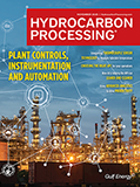Environment
Our waste is our resource—An initiative to turn all plastics bio-based
The vision is fully fossil-free plastics production.
Adapting and prospering in the energy transition
The energy transition is gathering momentum as pressure from society leads policy makers and investors to demand faster and deeper cuts to carbon dioxide (CO2) emissions from all industrial sectors.
The greening of the downstream industry: A carbon investment case for clean refining
<i>Hydrocarbon Processing</i> was pleased to speak recently with Mark Fonda, Executive Vice President, Engineering and Chief Technical Officer for Meridian Energy Group, which is building two grassroots refineries in the US.
Electric vehicles are coming, but their impact will be evolutionary, not revolutionary
Alternatively fueled vehicles (AFVs) are getting plenty of press these days, but their market penetration is still a long way from critical mass.
FCC metal trap additives to process more residue
Most refiners frequently need metal trapping or bottoms cracking additives for residue operations.
To reduce security vulnerabilities in downstream facilities, try unikernels
Unfortunately, but unsurprisingly, oil and gas facilities have joined financial, government, hospitality and other companies as tempting targets for cybercriminals.
Air-cooled steam surface condenser case study: Retrofit vs. revamp
It is difficult to revamp an existing air-cooled steam surface condenser (ACSSC) for higher throughput, since most ACSSC suppliers have changed to a single-tube row design and have discontinued their multi-tube row design.
Executive Viewpoint: Trends in the global process furnace market
Whether it is heating process fluids to achieve enough temperature in crude atmospheric and vacuum distillation units, or reaction temperatures inside furnace tubes to produce ethylene, vinyl chloride monomer, synthetic gas and continuous catalytic reformer reactors, or simple process heating (thermal fluid), process furnaces play a critical role in refineries and petrochemical complexes.
Editorial Comment: The true essence of optimization
What is the first thing that comes to mind when we hear the word optimization?
Construction
Sinochem Hongrun Petrochemical Co. Ltd. will use Honeywell UOP’s ionic liquids alkylation technology to produce high-octane, cleaner-burning transportation fuels.

- UPM unlocks new bio-based markets as Leuna biorefinery produces its first commercial product 12/19
- Stamicarbon awarded technology licensing contract for new urea plant in Eastern China 12/19
- Ford takes $19.5-B writedown on EV business 12/19
- Babcock & Wilcox awarded $40-MM contract for advanced wet gas scrubbing technology at Canadian petroleum refinery 12/19
- Aarti Industries secures methanol and toluene feedstock supply through multiple long-term contracts 12/19
- bp picks first outsider CEO Meg O'Neill after abrupt Auchincloss exit 12/19




